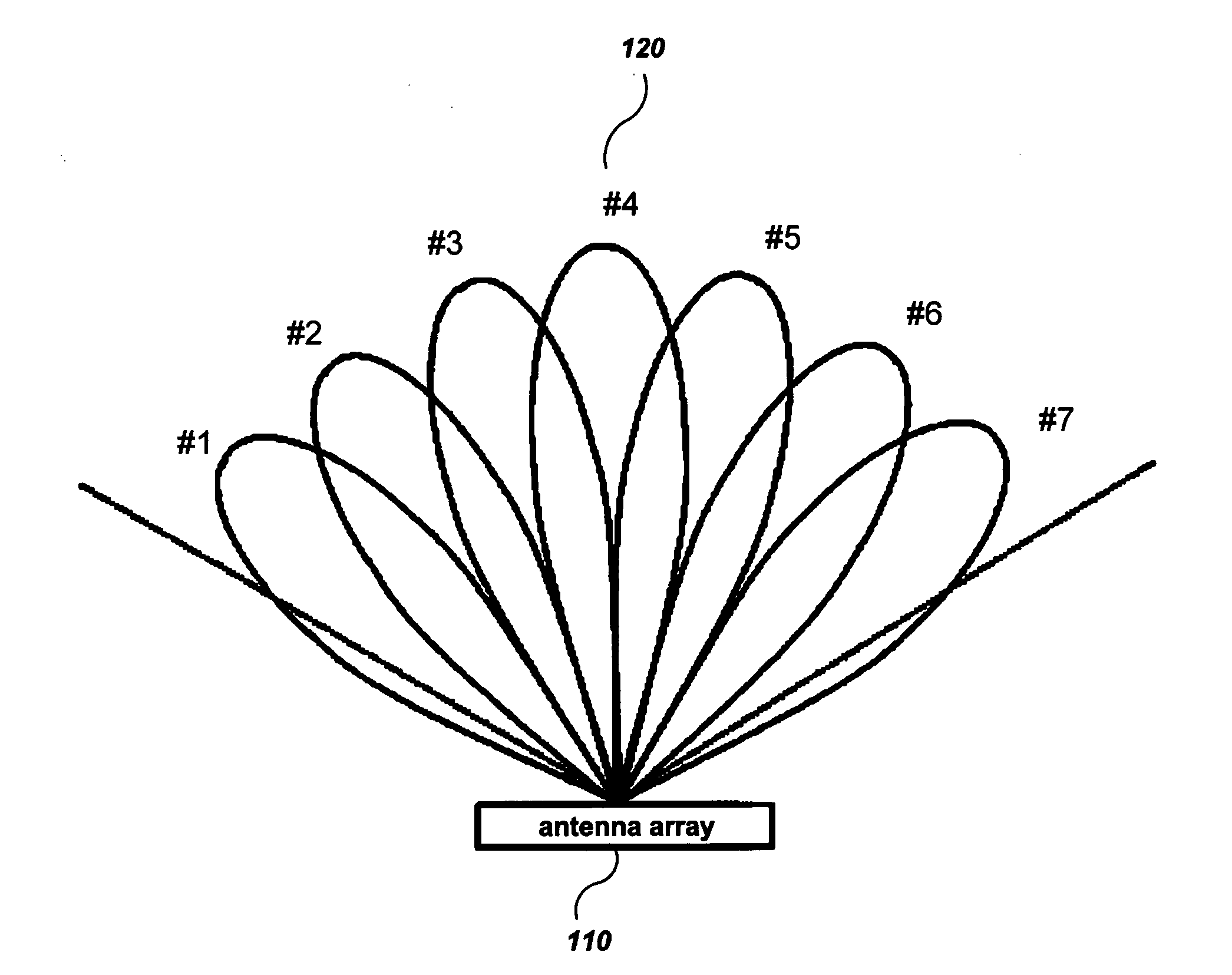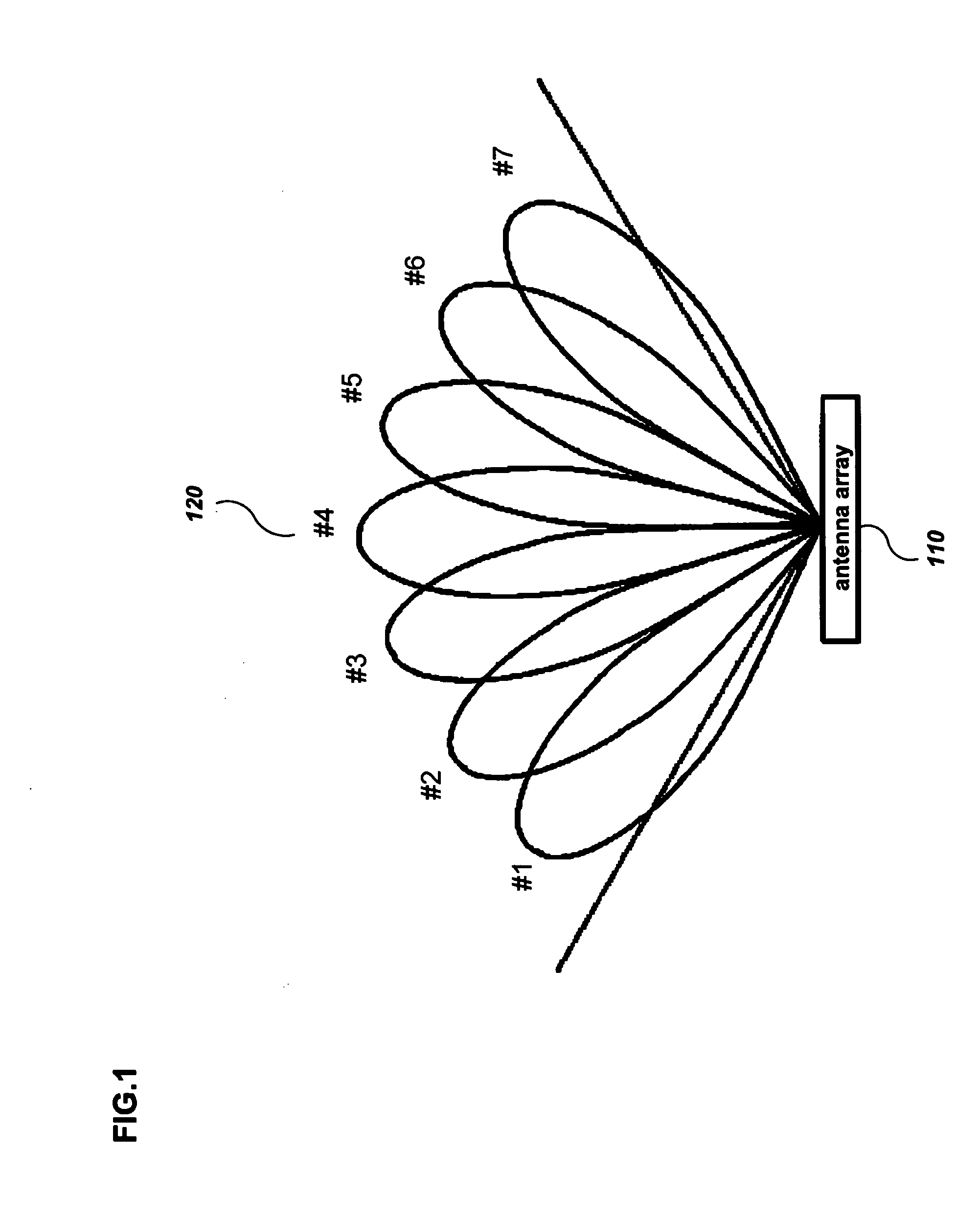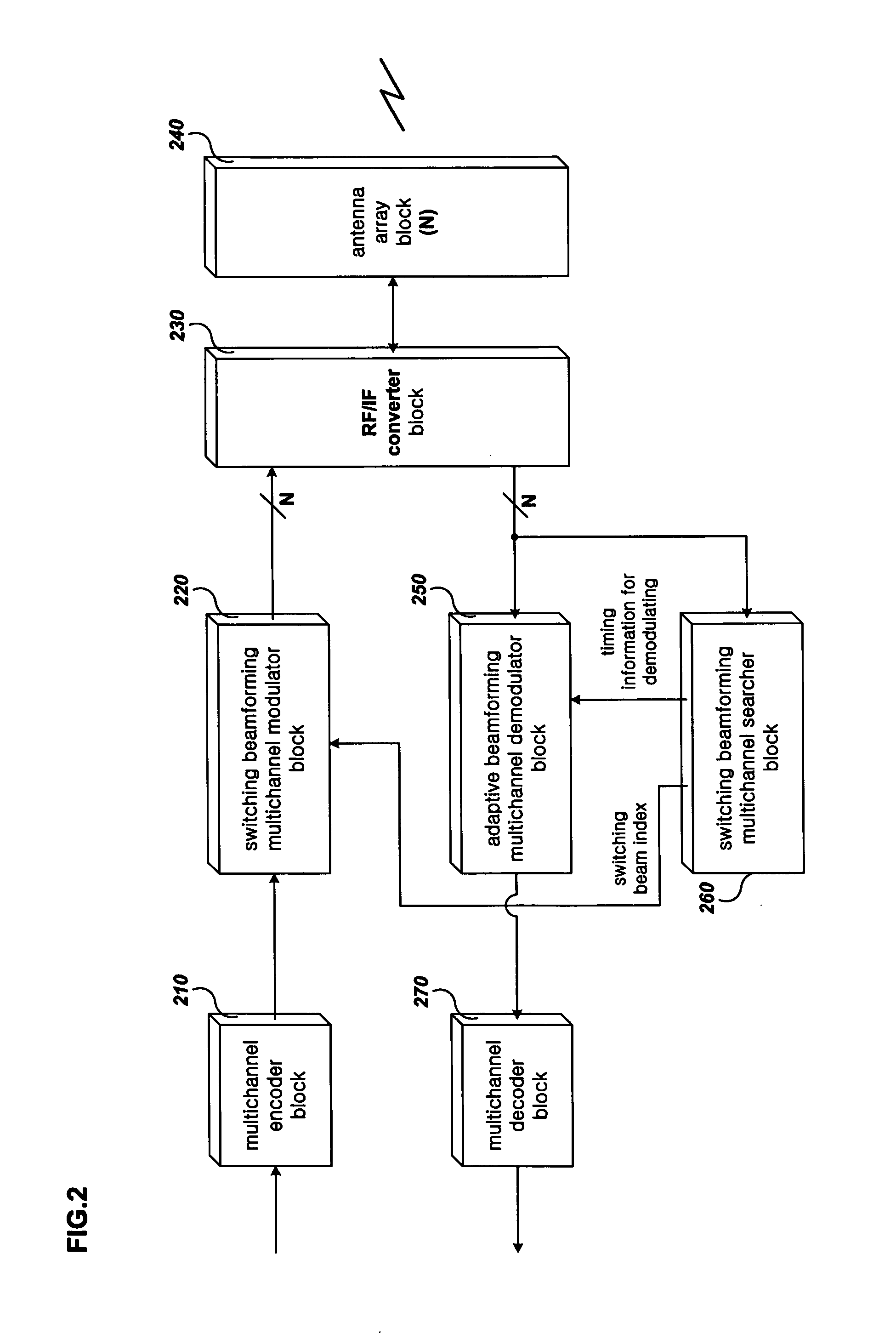Transceiver for a base station with smart antenna and a switched beamforming method in downlink
a technology of switching beams and antennas, applied in diversity/multi-antenna systems, instruments, spatial transmit diversity, etc., can solve the problems of inability to apply adaptive beam weight vectors in uplink and reliability, inability to solve capacity problems and reliability problems at the same time, and achieve the effect of improving performance in downlink, facilitating the formation of downlink beams, and increasing the complexity of terminals or bases
- Summary
- Abstract
- Description
- Claims
- Application Information
AI Technical Summary
Benefits of technology
Problems solved by technology
Method used
Image
Examples
Embodiment Construction
[0054] In the following detailed description, only the preferred embodiment of the invention has been shown and described, simply by way of illustration of the best mode contemplated by the inventor(s) of carrying out the invention. As will be realized, the invention is capable of modification in various obvious respects, all without departing from the invention. Accordingly, the drawings and description are to be regarded as illustrative in nature, and not restrictive. To clarify the present invention, parts which are not described in the specification are omitted, and parts for which similar descriptions are provided have the same reference numerals.
[0055] Hereinafter, a transceiver for a base station with a smart antenna and a switched beamforming method in downlink are described with reference to the appended drawings.
[0056]FIG. 3 shows a construction of a transceiver for a base station with multichannel for demodulating signals by forming an adaptive beam and using an adaptiv...
PUM
 Login to View More
Login to View More Abstract
Description
Claims
Application Information
 Login to View More
Login to View More - R&D
- Intellectual Property
- Life Sciences
- Materials
- Tech Scout
- Unparalleled Data Quality
- Higher Quality Content
- 60% Fewer Hallucinations
Browse by: Latest US Patents, China's latest patents, Technical Efficacy Thesaurus, Application Domain, Technology Topic, Popular Technical Reports.
© 2025 PatSnap. All rights reserved.Legal|Privacy policy|Modern Slavery Act Transparency Statement|Sitemap|About US| Contact US: help@patsnap.com



